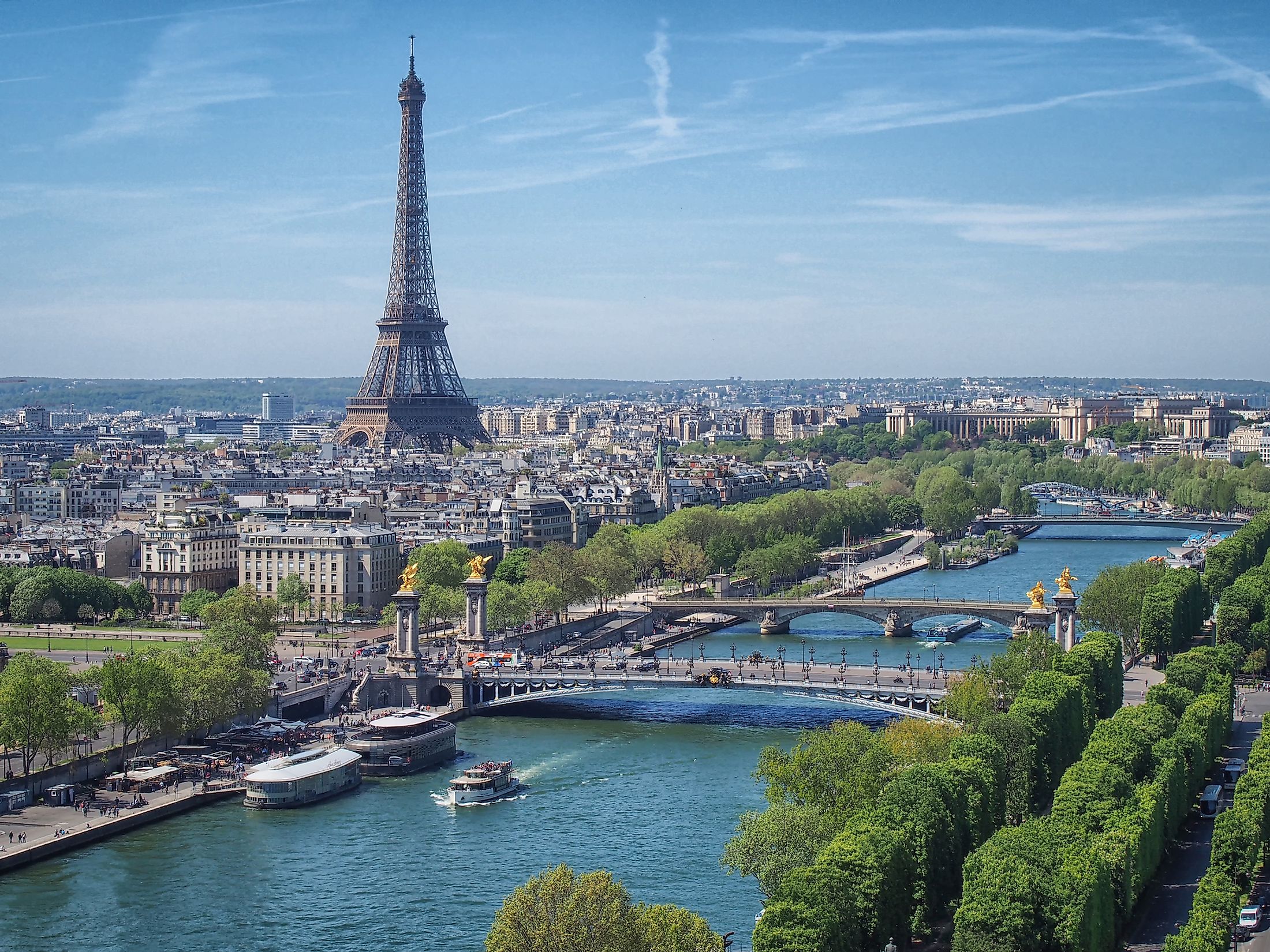
Seine River
The Seine River is France’s second-longest river after the Loire, covering a distance of 775 kilometers. This river has a drainage basin, known as Paris Basin, of approximately 79,000 square kilometers and drains mainly northern France. The Seine originated from Langres plateau in Source-Seine and flows through Paris into the English Chanel, an arm of the Atlantic Ocean separating northern France and southern England. The river discharges 560 cubic meters of water per second. It is one of Europe’s major historic rivers, with 37 bridges constructed across it in Paris, of which some date back to the early 17th century. Its fertile central basin is often considered the cradle of French Monarchy and plays a significant role in the metropolitan region.
Contents:
Origin Of The Name
The name “Seine” is derived from “Sēquana,” which, according to the Gallo-Roman religion, was the goddess of the river. This goddess received offerings from her subjects, with some of the offerings offered to the goddess found at the source of the river. These offerings are found in Dijon’s archaeological museums. Sēquana is often depicted as a graceful young woman standing on a boat, while early drawings depicted her as lying on her side. The Romans once built a temple near the river’s source, but only the temple’s foundations are all that is left.
River Course
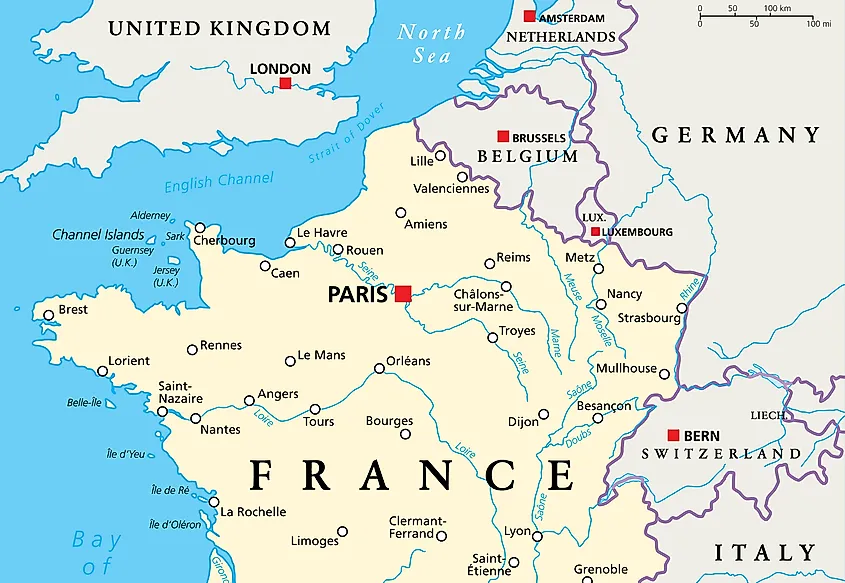
The Seine River rises at 446 meters above sea level on Langres Plateau in Source-Seine commune, Côtes d’Or department (Burgundy). Several small depressions or ditches feed the Seine at the source, with an artificial grotto indicating the primary source. The grotto, built in 1865, comprises a dragon, a dog, and a statue of nymph Sequana. The remains of the Gallo-Roman temple are also buried at the source.
From the source to Chatillon, the Seine River is only a small stream. The river flows northwest from Burgundy and into Champagne just above Troyes. In Champagne, it crosses the chalk plateau in a trench. Near Romiley, Seine is joined by Aube, then flows west to Île-de-France, from where it proceeds to Montereau through a wide valley. At Montereau, Seine is joined on the left bank by Yonne then turns northwest to pass through Corbeil and Melun on its way to Paris.
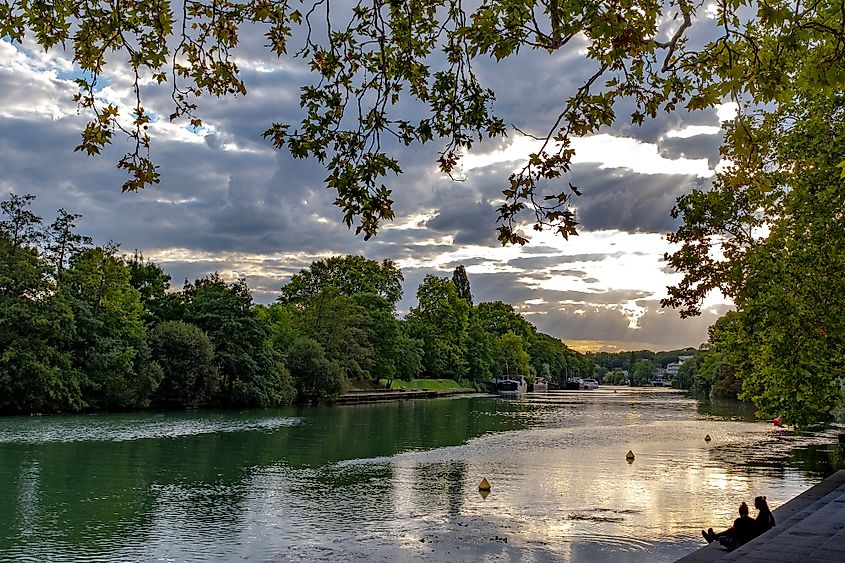
As the Seine approaches Paris, it is joined by Marne, one of its largest tributaries, on the right bank. It flows through Paris for about 13 kilometers from west to east, with its width varying from 30 to 200 meters and its depth from 3 to 6 meters. Seine is Paris’ iconic landmark crossed by 37 bridges, including Pont Neuf, Pont Alexandre III, and Pont de Normandie (a long cable-stayed bridge). From Paris, the river flows sluggishly below Mantes-la-Jolie and threads its way through the field-of-bloom and orchards in Normandy as it heads toward the English Channel. Its estuary in the channel extends about 27 kilometers to La Havre below the Tancarville.
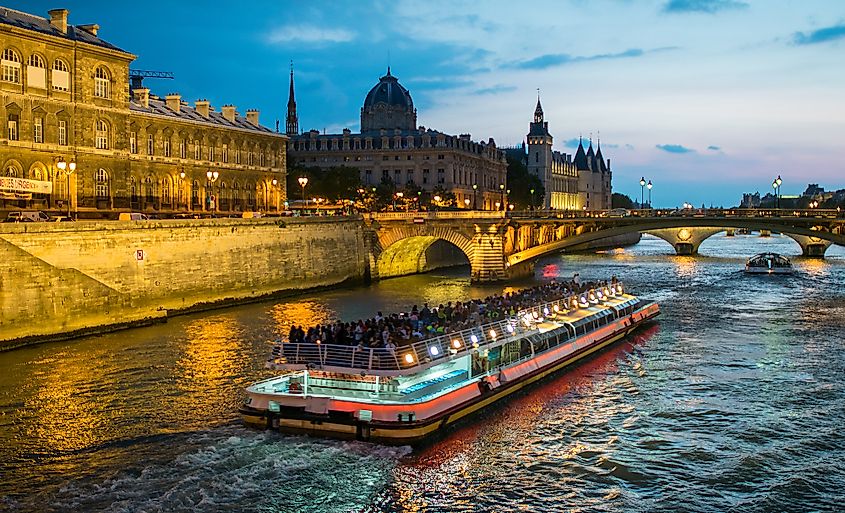
From its source to the English Channel, the Seine River is divided into five parts. The Small Seine (Petite Seine) extends from the sources to Montereau. The second part, known as Upper Seine (Haute Seine), is the section between Montereau to Paris, while the third section, known as the Paris waterway, is the entire river’s length contained in Paris. The portion from Paris to Rouen is referred to as Lower Seine (Basse Seine), and the final section, known as Maritime Seine, is from Rouen to the English Channel.
Hydrology
Beneath the Seine River basin are permeable rocks with high absorption capacities, helping in mitigating river floods. The basin receives modest annual precipitation ranging from 650 to 750 millimeters. The Yonne, one of Seine’s tributaries, derives its waters from crystalline highlands where winter snow is abundant. Occasionally, the river level reduces during summer, and winter floods are also rare. The Seine, unlike the Loire, does not have sandbanks.
During high rainfall seasons, the Paris sewage system fails, an occurrence referred to as sanitary sewer overflow. The raw sewage often finds its way into the Seine River, causing an oxygen deficit. The river also has a high concentration of heavy metals. Despite the presence of these pollutants, the river’s water quality has improved significantly over the years.
Economy
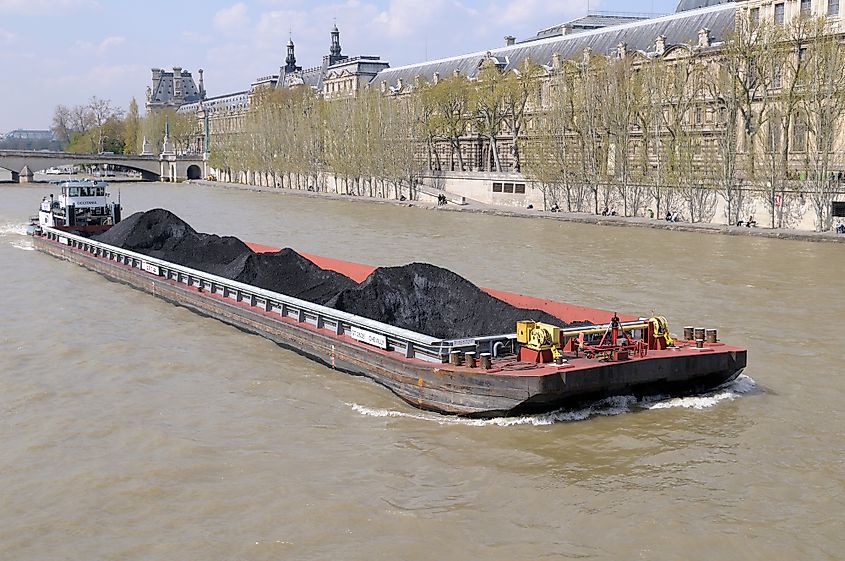
The Seine River, especially Upper Seine and Paris Waterway, is a major traffic highway, linking Paris to Le Havre. Vessels of up to 3.2 meters can safely reach Paris quays, with the traffic comprising mainly building material and petroleum products. However, the vessels can only use the Seine Maritime section between Le Havre and Rouen. The lower Seine is connected to the Rhine by Marne, while Oise connects it to Belgium. The Seine is also linked to the Saone-Rhone and Loire waterway, although the canals are of little economic significance.
The Seine River accounts for almost half of the water used for both household and industrial consumption in Paris and 75% of the water used in the Le Havre and Rouen regions. Although the Seine is an economically important river, its regime is relatively moderate. Dams and reservoirs have been constructed along the Yonne River to raise the water levels in the Seine. Lake Setton, Chaumecon, and Crescent have helped reduce floods and ensure a constant water supply. The Seine Reservoir, alongside Marne Reservoir (Western Europe’s largest artificial lake), are important tourist attractions and bird sanctuaries.
Brief History
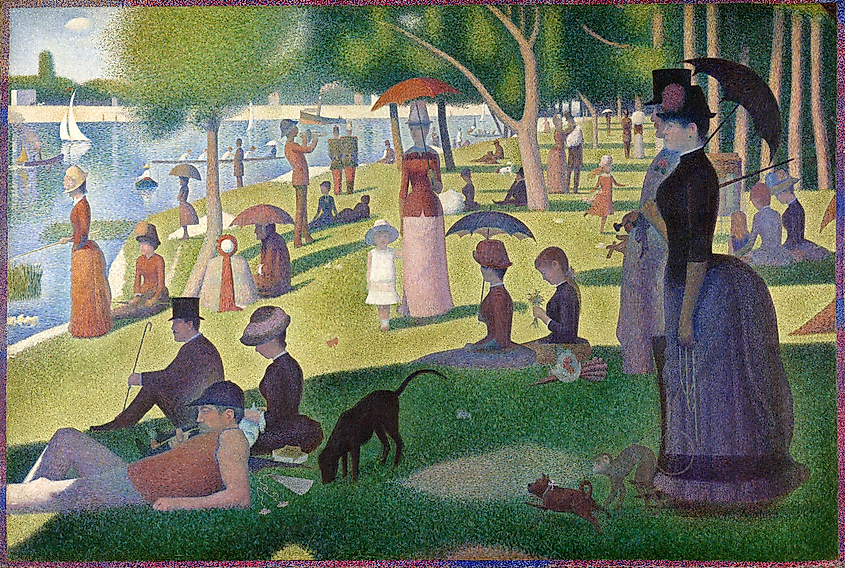
The Seine River has been at the center of some of Paris’ significant historical events. In 845, the Vikings sailed through this river and sieged Paris as part of their invasion of West France. Forty years later, the Vikings sailed up the Seine and attacked the city again. In March 1314, Ile Aux Juifs, an island in the Seine River, was the site for the burning of Jacques de Molay following the orders from Philip IV of France.
The Seine River hosted some of the 1900 Summer Olympic events, including water polo, swimming, and rowing. Although the river was part of the 1944 Operation Overload, the Allies reached the Seine within 90 days from the D-Day but did not launch the assault across it because the German resistance had already crumbled. The Seine has also claimed some lives, although the exact number is unknown. During the 1961 Paris Massacre, the French policemen drowned Algerian victims in the river at Pont Saint-Michel. In 2007, about 55 dead bodies were retrieved from the river. Seine Riverbank in Paris was added to the list of Europe’s World Heritage Site in 1991.










